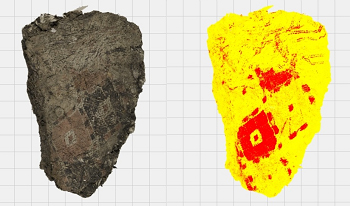
Archeological textiles can provide invaluable insight into the past. However, they are often highly fragmented, and a puzzle has to be solved to re-assemble the object and recover the original motifs. Unlike common jigsaw puzzles, archeological fragments are highly damaged, and no correct solution to the puzzle is known. Although automatic puzzle solving has fascinated computer scientists for a long time, this work is one of the first attempts to apply modern machine learning solutions to archeological textile re-assembly. First and foremost, it is important to know which fragments belong to the same object. Therefore, features are extracted from digital images of textile fragments using color statistics, classical texture descriptors, and deep learning methods. These features are used to conduct clustering and identify similar fragments. Four different case studies with increasing complexity are discussed in this article: from well-preserved textiles with available ground truth to an actual open problem of Oseberg archeological tapestry with unknown solution. This work reveals significant knowledge gaps in current machine learning, which helps us to outline a future avenue toward more specialized application-specific models.